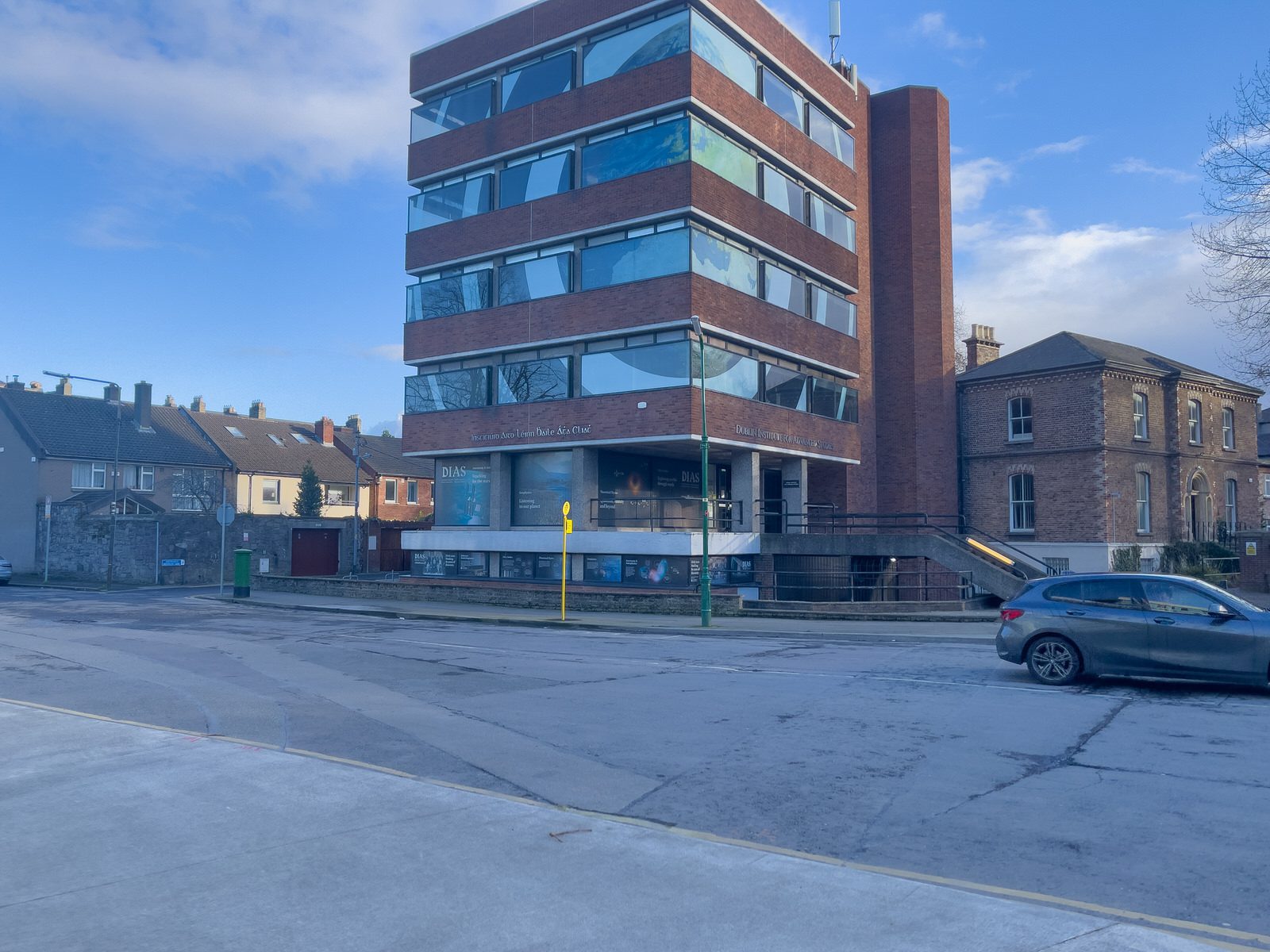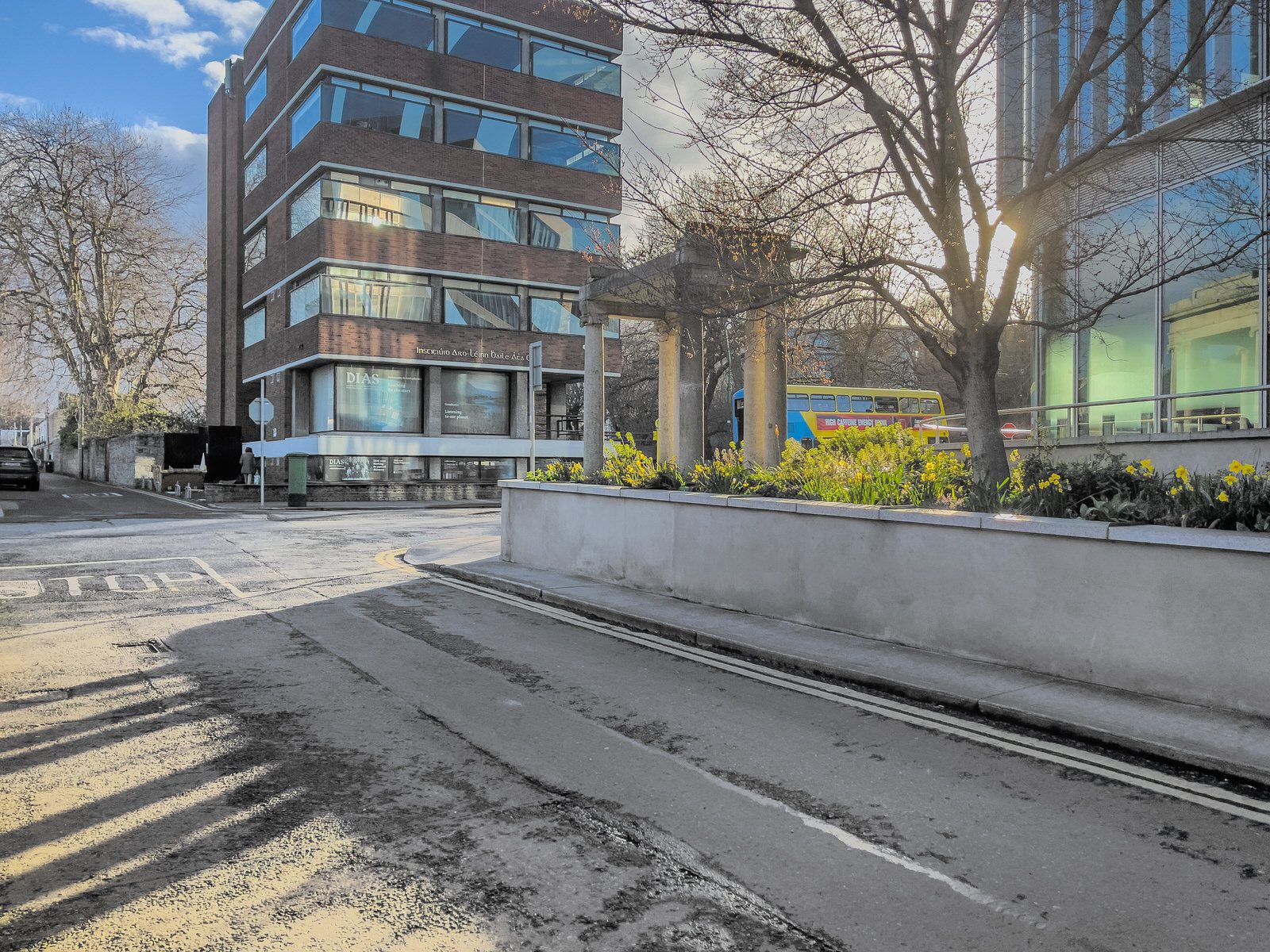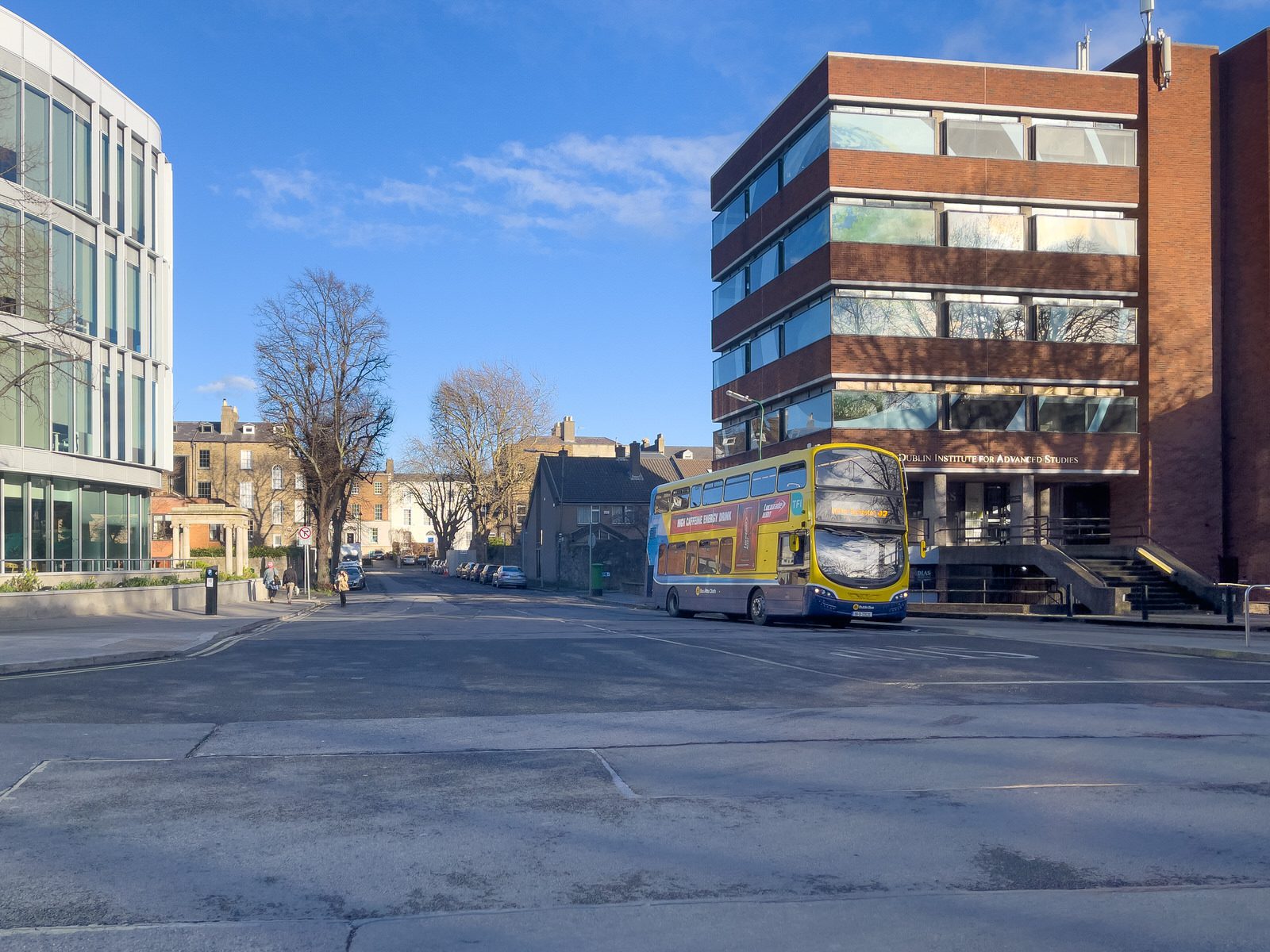MAY HAVE BEEN RELOCATED
Apparently this is all that is left of a large Victorian mansion, many of which lined Burlington Road in the 1880s. The street is now home to many modern [and older] office blocks.
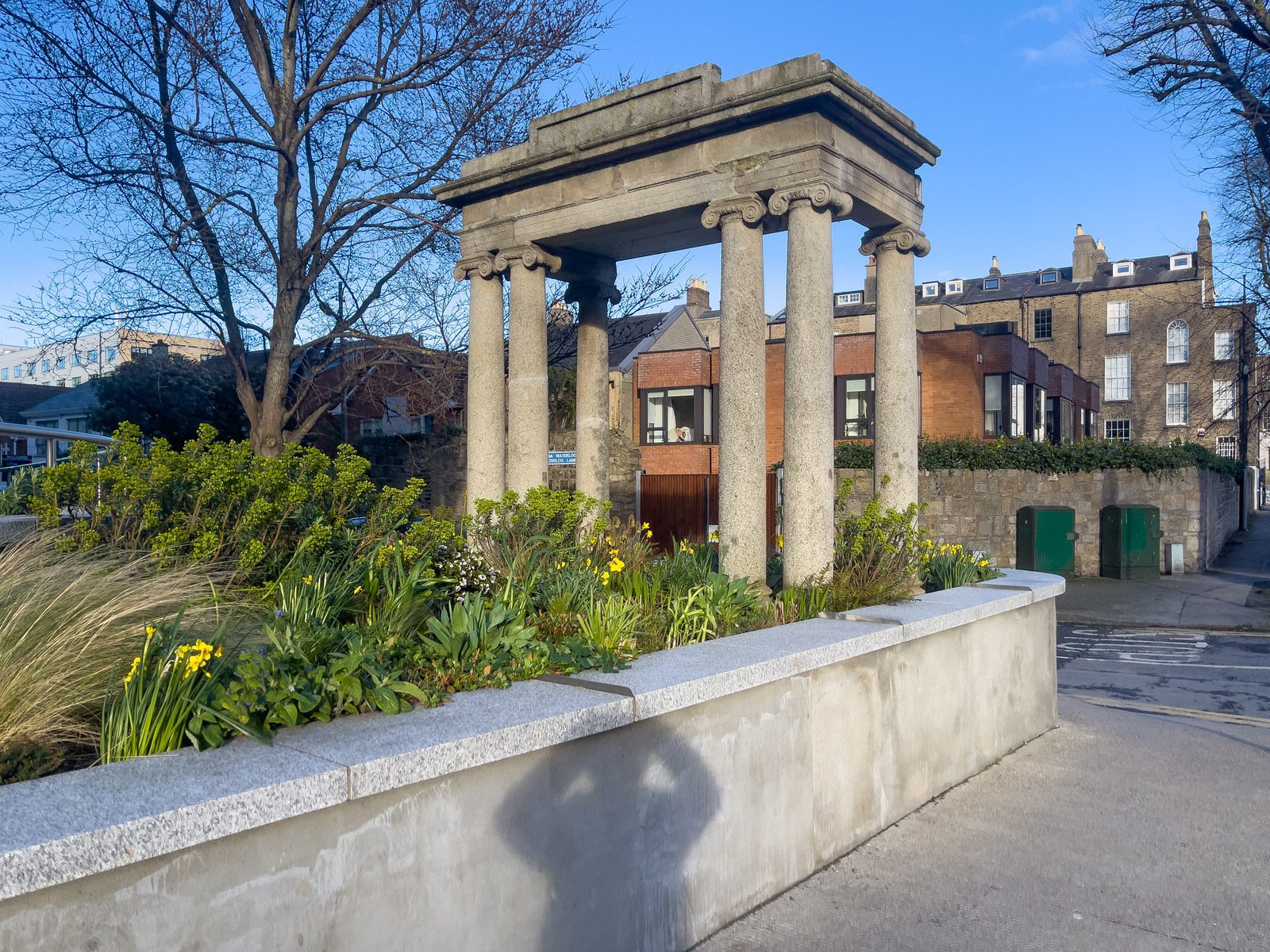

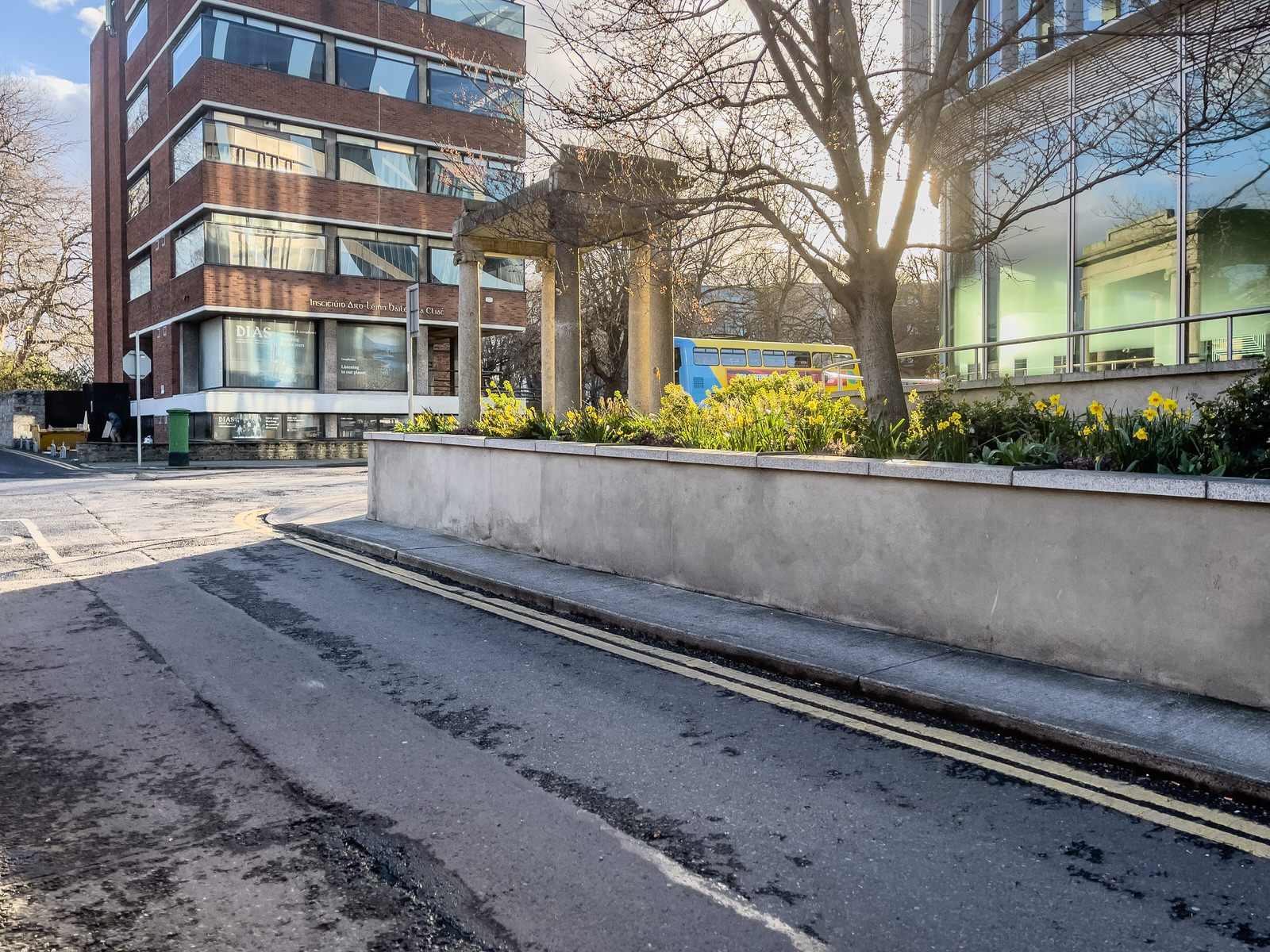
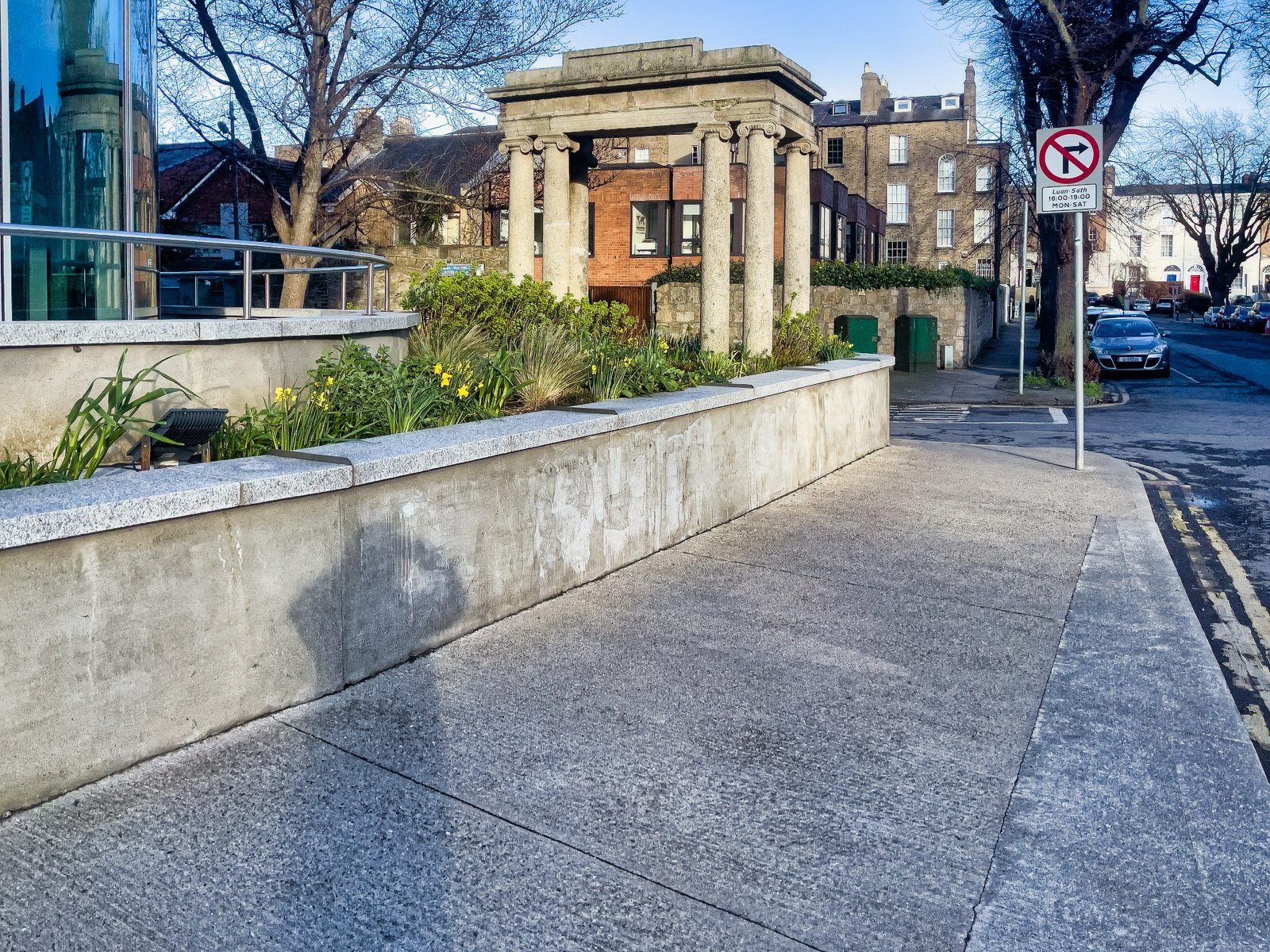
THE HEADLESS PHOTO BLOG
by infomatique
MAY HAVE BEEN RELOCATED
Apparently this is all that is left of a large Victorian mansion, many of which lined Burlington Road in the 1880s. The street is now home to many modern [and older] office blocks.




by infomatique
PHOTOGRAPHED 18 MARCH 2023
I mentioned Amazon because I received an communication from them today advising that they are closing DPReview in April [10th].
Most people in Dublin were aware of Burlington Road because of the Burlington Hotel. I went to school nearby and during the summer holidays I worked in a variety of hotels owned by P.V. Doyle who owned the Burlington Hotel.
Back in the late 1960s I heard some of my teachers, who lived in the area, describe Burlington Road as being “leafy” since then many of the grand houses have been replaced by generations of office blocks mainly because the older buildings occupied sites that were worth more than the occupying buildings were.
The first phase of modern buildings included Sam Stephenson’s Dublin Institute of Advanced Studies building which is now a protected building. To the best of my knowledge the building was completed in 1971 or 1972.
The Burlington hotel was developed on the site of what was formerly the grounds of Wesley College Dublin and included the Victorian houses – Burlington House, Tullamaine Villa and Embury House (formerly Burleigh House). It also encompassed the site of Mespil House, a large notable Georgian house which was demolished in the 1950s. Note: Wesley College Dublin was one of the few schools that CUS, my school, could beat on the rugby pitch.
Completed in 1972 by P.V. Doyle initially as part of Doyle Hotels and named the Burlington Hotel and nicknamed “the Burlo” by Dubliners, the hotel was purchased by property developer Bernard McNamara in 2007 for €288 million.
Following the post-2008 Irish economic downturn, Bank of Scotland (Ireland) took possession of the hotel from McNamara. It was sold in 2012 to The Blackstone Group for €67 million, in what was Ireland’s biggest property transaction since the start of the downturn. The DoubleTree chain assumed management in 2013, and the hotel was rebranded as DoubleTree by Hilton Dublin – Burlington Road. In 2016, Blackstone sold the hotel to the German investment bank DekaBank, and a 25-year lease to operate the hotel was granted to the Dalata Hotel Group, which rebranded it within their Clayton Hotels brand as Clayton Hotel Burlington Road in November 2016.
The hotel’s former nightclub, Club Anabel, gained notoriety in 2000 when the death of Brian Murphy took place during a fight outside the premises.
![BURLINGTON ROAD [I WAS SURPRISED TO DISCOVER THAT AMAZON HAD AN OFFICE HERE]-215448-1 BURLINGTON ROAD I WAS SURPRISED TO DISCOVER THAT AMAZON HAD AN OFFICE HERE 001](https://excellentstreetimages.com/2023HeadlessPhotoBlogWordPress/wp-content/uploads/2023/03/BURLINGTON-ROAD-I-WAS-SURPRISED-TO-DISCOVER-THAT-AMAZON-HAD-AN-OFFICE-HERE-215448-1.jpg)
![BURLINGTON ROAD [I WAS SURPRISED TO DISCOVER THAT AMAZON HAD AN OFFICE HERE]-215449-1 BURLINGTON ROAD I WAS SURPRISED TO DISCOVER THAT AMAZON HAD AN OFFICE HERE 002](https://excellentstreetimages.com/2023HeadlessPhotoBlogWordPress/wp-content/uploads/2023/03/BURLINGTON-ROAD-I-WAS-SURPRISED-TO-DISCOVER-THAT-AMAZON-HAD-AN-OFFICE-HERE-215449-1.jpg)
![BURLINGTON ROAD [I WAS SURPRISED TO DISCOVER THAT AMAZON HAD AN OFFICE HERE]-215450-1 BURLINGTON ROAD I WAS SURPRISED TO DISCOVER THAT AMAZON HAD AN OFFICE HERE 003](https://excellentstreetimages.com/2023HeadlessPhotoBlogWordPress/wp-content/uploads/2023/03/BURLINGTON-ROAD-I-WAS-SURPRISED-TO-DISCOVER-THAT-AMAZON-HAD-AN-OFFICE-HERE-215450-1.jpg)
![BURLINGTON ROAD [I WAS SURPRISED TO DISCOVER THAT AMAZON HAD AN OFFICE HERE]-215451-1 BURLINGTON ROAD I WAS SURPRISED TO DISCOVER THAT AMAZON HAD AN OFFICE HERE 004](https://excellentstreetimages.com/2023HeadlessPhotoBlogWordPress/wp-content/uploads/2023/03/BURLINGTON-ROAD-I-WAS-SURPRISED-TO-DISCOVER-THAT-AMAZON-HAD-AN-OFFICE-HERE-215451-1.jpg)
![BURLINGTON ROAD [I WAS SURPRISED TO DISCOVER THAT AMAZON HAD AN OFFICE HERE]-215439-1 BURLINGTON ROAD I WAS SURPRISED TO DISCOVER THAT AMAZON HAD AN OFFICE HERE 005](https://excellentstreetimages.com/2023HeadlessPhotoBlogWordPress/wp-content/uploads/2023/03/BURLINGTON-ROAD-I-WAS-SURPRISED-TO-DISCOVER-THAT-AMAZON-HAD-AN-OFFICE-HERE-215439-1.jpg)
![BURLINGTON ROAD [I WAS SURPRISED TO DISCOVER THAT AMAZON HAD AN OFFICE HERE]-215441-1 BURLINGTON ROAD I WAS SURPRISED TO DISCOVER THAT AMAZON HAD AN OFFICE HERE 006](https://excellentstreetimages.com/2023HeadlessPhotoBlogWordPress/wp-content/uploads/2023/03/BURLINGTON-ROAD-I-WAS-SURPRISED-TO-DISCOVER-THAT-AMAZON-HAD-AN-OFFICE-HERE-215441-1.jpg)
![BURLINGTON ROAD [I WAS SURPRISED TO DISCOVER THAT AMAZON HAD AN OFFICE HERE]-215442-1 BURLINGTON ROAD I WAS SURPRISED TO DISCOVER THAT AMAZON HAD AN OFFICE HERE 007](https://excellentstreetimages.com/2023HeadlessPhotoBlogWordPress/wp-content/uploads/2023/03/BURLINGTON-ROAD-I-WAS-SURPRISED-TO-DISCOVER-THAT-AMAZON-HAD-AN-OFFICE-HERE-215442-1.jpg)
![BURLINGTON ROAD [I WAS SURPRISED TO DISCOVER THAT AMAZON HAD AN OFFICE HERE]-215443-1 BURLINGTON ROAD I WAS SURPRISED TO DISCOVER THAT AMAZON HAD AN OFFICE HERE 008](https://excellentstreetimages.com/2023HeadlessPhotoBlogWordPress/wp-content/uploads/2023/03/BURLINGTON-ROAD-I-WAS-SURPRISED-TO-DISCOVER-THAT-AMAZON-HAD-AN-OFFICE-HERE-215443-1.jpg)
![BURLINGTON ROAD [I WAS SURPRISED TO DISCOVER THAT AMAZON HAD AN OFFICE HERE]-215444-1 BURLINGTON ROAD I WAS SURPRISED TO DISCOVER THAT AMAZON HAD AN OFFICE HERE 009](https://excellentstreetimages.com/2023HeadlessPhotoBlogWordPress/wp-content/uploads/2023/03/BURLINGTON-ROAD-I-WAS-SURPRISED-TO-DISCOVER-THAT-AMAZON-HAD-AN-OFFICE-HERE-215444-1.jpg)
![BURLINGTON ROAD [I WAS SURPRISED TO DISCOVER THAT AMAZON HAD AN OFFICE HERE]-215445-1 BURLINGTON ROAD I WAS SURPRISED TO DISCOVER THAT AMAZON HAD AN OFFICE HERE 010](https://excellentstreetimages.com/2023HeadlessPhotoBlogWordPress/wp-content/uploads/2023/03/BURLINGTON-ROAD-I-WAS-SURPRISED-TO-DISCOVER-THAT-AMAZON-HAD-AN-OFFICE-HERE-215445-1.jpg)
![BURLINGTON ROAD [I WAS SURPRISED TO DISCOVER THAT AMAZON HAD AN OFFICE HERE]-215446-1 BURLINGTON ROAD I WAS SURPRISED TO DISCOVER THAT AMAZON HAD AN OFFICE HERE 011](https://excellentstreetimages.com/2023HeadlessPhotoBlogWordPress/wp-content/uploads/2023/03/BURLINGTON-ROAD-I-WAS-SURPRISED-TO-DISCOVER-THAT-AMAZON-HAD-AN-OFFICE-HERE-215446-1.jpg)
![BURLINGTON ROAD [I WAS SURPRISED TO DISCOVER THAT AMAZON HAD AN OFFICE HERE]-215447-1 BURLINGTON ROAD I WAS SURPRISED TO DISCOVER THAT AMAZON HAD AN OFFICE HERE 012](https://excellentstreetimages.com/2023HeadlessPhotoBlogWordPress/wp-content/uploads/2023/03/BURLINGTON-ROAD-I-WAS-SURPRISED-TO-DISCOVER-THAT-AMAZON-HAD-AN-OFFICE-HERE-215447-1.jpg)
![BURLINGTON ROAD [I WAS SURPRISED TO DISCOVER THAT AMAZON HAD AN OFFICE HERE]-215438-1 BURLINGTON ROAD I WAS SURPRISED TO DISCOVER THAT AMAZON HAD AN OFFICE HERE 013](https://excellentstreetimages.com/2023HeadlessPhotoBlogWordPress/wp-content/uploads/2023/03/BURLINGTON-ROAD-I-WAS-SURPRISED-TO-DISCOVER-THAT-AMAZON-HAD-AN-OFFICE-HERE-215438-1.jpg)
![BURLINGTON ROAD [I WAS SURPRISED TO DISCOVER THAT AMAZON HAD AN OFFICE HERE]-215440-1 BURLINGTON ROAD I WAS SURPRISED TO DISCOVER THAT AMAZON HAD AN OFFICE HERE 014](https://excellentstreetimages.com/2023HeadlessPhotoBlogWordPress/wp-content/uploads/2023/03/BURLINGTON-ROAD-I-WAS-SURPRISED-TO-DISCOVER-THAT-AMAZON-HAD-AN-OFFICE-HERE-215440-1.jpg)
by infomatique
PHOTOGRAPHED 18 MARCH 2023
I must admit that I have never paid much attention to this building until I realised that it was home to the Dublin Institute for Advanced Studies (DIAS) School of Theoretical Physics.
In April 2021 two Modern Movement buildings of the early 1970s were added to the Record of Protected Structures. One of these is no. 24 St Stephen’s Green by Michael Scott and Partners; the other is the Dublin Institute for Advanced Studies (DIAS) School of Theoretical Physics at no. 10 Burlington Road by Stephenson Gibney & Associates.
The Dublin Institute for Advanced Studies (DIAS) is a statutory independent research institute in Ireland. It was established in 1940 on the initiative of the Taoiseach, Éamon de Valera, in Dublin.
The institute consists of three schools: the School of Theoretical Physics, the School of Cosmic Physics and the School of Celtic Studies. The directors of these schools are, as of 2022, Professor Denjoe O’Connor, Professor Tom Ray and Professor Ruairí Ó hUiginn. The institute, under its governing act, is empowered to “train students in methods of advanced research” but does not itself award degrees; graduate students working under the supervision of Institute researchers can, with the agreement of the governing board of the appropriate school, be registered for a higher degree in any university worldwide.
Following a comprehensive review of the higher education sector and its institutions, conducted by the Higher Education Authority for the Minister for Education and Skills in 2013, DIAS was approved to remain an independent institute carrying out fundamental research. It appointed a new CEO, Dr Eucharia Meehan, formerly director of the Irish Research Council, in the summer of 2017.
After becoming Taoiseach in 1937, Éamon de Valera investigated the possibility of setting up an institute of higher learning. De Valera was aware of the decline of the Dunsink Observatory, where Sir William Rowan Hamilton and others had held the position of Royal Astronomer of Ireland. Following meetings with prominent academics in the fields of mathematics and astronomy, he came to the conclusion that astronomy at Dunsink should be revived and an institute for higher learning should be established. The institute was and is modelled on the Institute for Advanced Study in Princeton, New Jersey, which was founded in 1930, and theoretical physics was still the research subject in 1940. The School of Celtic Studies owes its founding to the importance de Valera accorded to the Irish language. He considered it a vital element in the makeup of the nation, and therefore important that the nation should have a place of higher learning devoted to this subject.
DIAS was founded on the direction of the Taoiseach, under the Institute for Advanced Studies Act, 1940 As set out in its legislation, ‘the functions of the Institute shall be to provide facilities for the furtherance of advanced study and the conduct of research in specialised branches of knowledge and for the publication of results of advanced study and research.’
